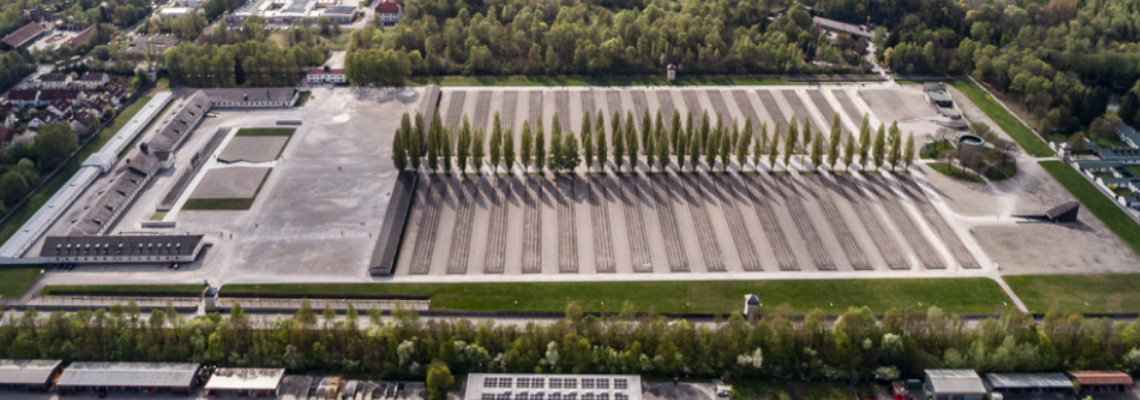Dachau Concentration Camp 1933–1945
1933
After Adolf Hitler was appointed Reich Chancellor on January 30 1933, the National Socialists used an array of terror measures to establish a dictatorship in the German Reich. The persecution and elimination of all political opposition plays a pivotal role. Concentration camps are opened across the Reich to facilitate the mass imprisonment of political opponents. The Dachau concentration camp is one of these early sites. On March 22 1933, the first prisoner transports arrive at the camp set up on the grounds of a disused gunpowder and munitions factory. The camp commandant, Theodor Eicke, introduces a system in October 1933 that includes brutal punishment rules for the prisoners and duty orders for the camp SS. The regulations institutionalize SS rule over the prisoners that is characterized by tyranny and terror.
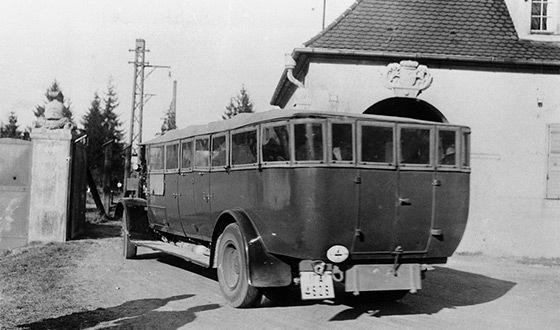
The first prisoner transport in a bus arrives at the gatehouse of the former factory grounds (Municipal archives Munich)
1934
Under the pretext that the SA (Sturmabteilung) is planning a coup (the “Röhm Putsch”), Adolf Hitler orders the SS to murder high-level SA officials and other political opponents throughout the Reich; 21 murders are committed in the Dachau concentration camp. The role of the SS in this massacre contributes decisively to its rise in power. SS units take charge of other concentration camps up until now guarded by the SA. Theodor Eicke, meanwhile appointed “Inspector of the Concentration Camps”, imposes the “Dachau model” he has personally developed as the standard to be followed in all other concentration camps.
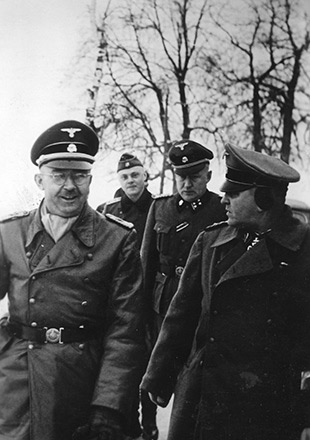
Heinrich Himmler (l.) and Theodor Eicke (r.), SS propaganda photo, around 1941/42 (Federal archives)
1935
In 1935 Adolf Hitler decides to utilize the concentration camp system as a permanent instrument of political terror and extend its scope. This paves the way for promulgating a permanent state of emergency and installing despotic rule by the Gestapo (Geheime Staatspolizei) and SS under Heinrich Himmler.
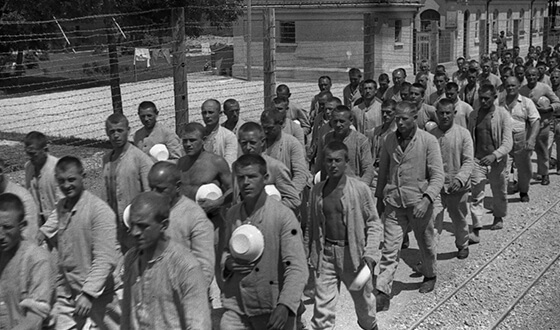
Prisoners on their way to receive rations in the first Dachau camp, SS propaganda photo (Federal archives)
1936
With the exception of the Dachau concentration camp, all early concentration camps are disbanded and new larger sites of incarceration are built. Besides opponents to the regime, more and more persons are imprisoned for reasons of racial ideology and “social hygiene”. These include sexual and ethnic minorities like homosexuals and Sinti and Roma. Persons who have repeatedly committed offences or lead a non-conformist life are labelled “criminal” and “asocial”, persecuted, and committed to concentration camps.
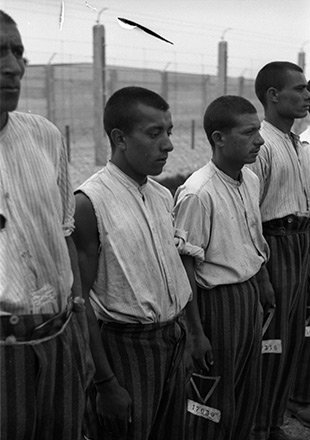
Roma from the Burgenland, SS propaganda photo, July 20 1938 (Federal archives)
1937
In 1937 work commences on the expansion of the SS camp and the construction of a new prisoner camp with a capacity for 6,000 inmates. The prisoners are forced to carry out the extremely strenuous building work. The decree on the “preventive fighting of crime by the police” from 1937 systematizes arrest campaigns targeting persons persecuted as “asocial” and “professional criminals”. The provision forms the basis for the mass arrests carried out the following year as part of the “work-shy Reich campaign”.
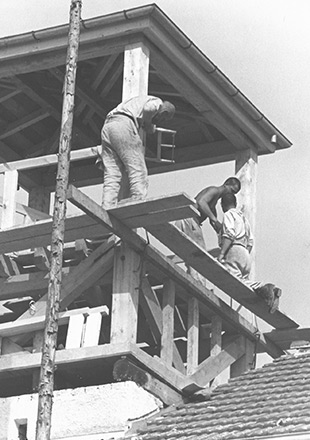
Prisoners were forced to build the guard tower on the Jourhaus, SS propaganda photo (Dachau Concentration Camp Memorial Site)
1938
After the occupation of Austria and the Sudetenland, thousands of political prisoners, Roma and Sinti, and Jews are deported to the Dachau concentration camp. Over the course of the November pogroms in 1938, almost 11,000 Jewish men are sent to the Dachau concentration camp. Physically abused, they are pressured by the SS into relinquishing their property and possessions and are forced to emigrate.
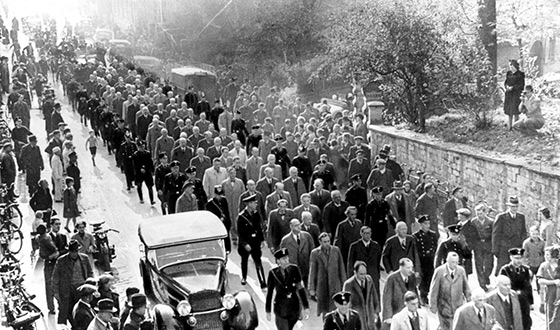
Deportation of Jewish citizens from Baden-Baden to the Dachau concentration camp, November 10 1938 (Federal archives)
1939
The Second World War begins on September 1 1939 when German armed forces attack Poland. At the end of September, the SS temporarily evacuates the prisoners’ camp at Dachau to use the grounds to militarily drill the SS “Death’s Head” division. Up until the spring of 1940 more than 5,000 prisoners are transferred to the Flossenbürg, Mauthausen, and Buchenwald concentration camps, where the conditions of their imprisonment dramatically worsen.
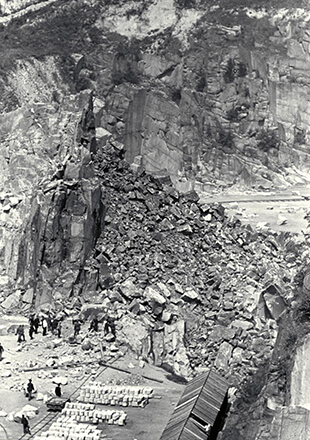
Prisoners are forced to perform brutal hard labor in the quarry of the Mauthausen concentration camp (Federal archives/Museu d’Historia de Catalunya, Barcelona)
1940
From 1940 more and more prisoners are transported to the Dachau concentration camp from countries occupied by the German armed forces. Once the war begins, living conditions drastically worsen for the prisoners in the Dachau concentration camp. The murderous working conditions, the insufficient rations, and a lack of hygiene facilities in the camp lead to a soaring death rate.
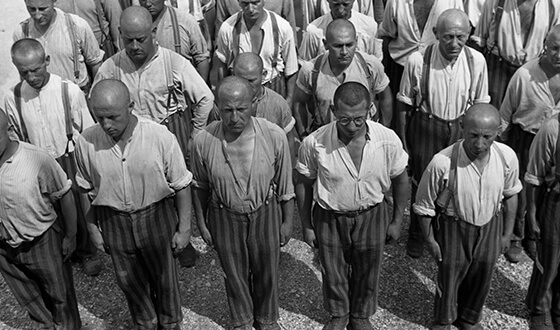
Prisoners standing at attention, SS propaganda photo (Federal archives)
1941
After the German invasion of the Soviet Union in June 1941, the Dachau concentration camp is used as an execution site for Soviet prisoners of war. The Gestapo “segregates” members of the Red Army they identify as or consider to be intellectuals, Jews, or Communist officials from the rest of the prisoners, before handing them over to be shot by the camp SS. The mass executions are first carried out in the bunker courtyard on the camp grounds and then moved to the SS shooting range at Hebertshausen. There the SS murder over 4,000 Soviet prisoners of war in 1941-42.
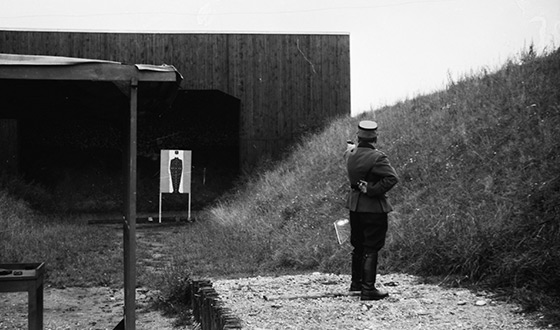
Shooting practice in the right-hand lane of the machine gun and pistol stand at Hebertshausen (Heinz Bielmeier, Dachau)
1942
As part of the “euthanasia actions” carried out by the Nazi regime, throughout 1942 at the Dachau concentration camp SS doctors “select” prisoners who are sick and no longer able to work. Over 2,500 prisoners are sent on “invalid transports” to the death facility at Hartheim Castle in Austria. There they are murdered with lethal gas by the mental hospital’s personnel. From 1942 SS doctors in the Dachau concentration carry out cruel medical experiments on prisoners.
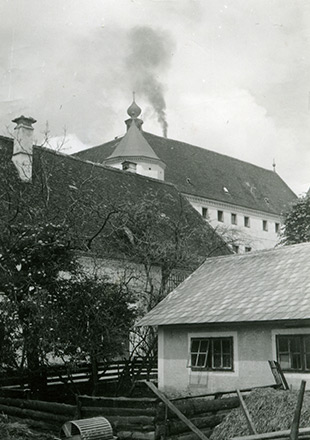
The death facility at Hartheim Castle with smoke billowing out of the crematorium chimney (Wolfgang Schuhmann)
1943
In February 1943 the Nazi leadership proclaims “total war”. The mobilization of all available resources for the intended “final victory” radicalizes the decision of the Nazi regime, already taken in 1942, to mass deploy concentration camp prisoners as forced laborers in war production. The SS erects numerous subcamps to the main concentration camps in close proximity to armament factories. Up until the end of the war, the Dachau concentration camp operates a network of 140 subcamps, located foremost in southern Bavaria. The function of the main camp changes: it becomes a collection and distribution point of slave workers for the subcamps.
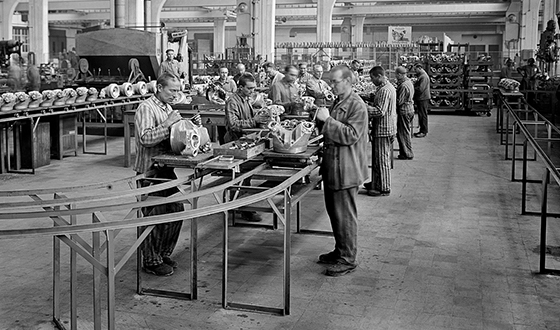
Concentration camp prisoners perform forced labor for BMW at the Allach external work detail (BMW Group Archiv, Munich)
1944
In 1944 it becomes increasingly clear that Germany faces certain defeat. The Red Army and the Western Allies are advancing towards the Reich’s boundaries. “Evacuation transports” from concentration camps close to the frontline are continuously arriving at the main Dachau camp. With more than 30,000 prisoners the camp is dramatically overcrowded. The catastrophic living conditions lead to the outbreak of a typhus epidemic. The prisoners in the subcamp complexes are subjected to murderous prison and working conditions. Of the some 41,500 persons who lose their lives between 1933 and 1945, over one-third die during the final six months of the war.
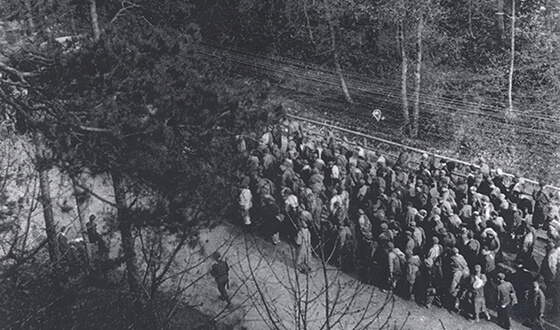
Prisoners from the Kaufering subcamp on a “death march” pass through Landsberg am Lech (Municipal archives Landsberg am Lech)
1945
At the end of April 1945, the SS begins evacuating prisoners from the Dachau concentration camp to prevent their liberation by Allied troops. At least 25,000 prisoners from the Dachau camp system are sent on exhausting foot marches in the direction of Tyrol or taken away in goods trains. Several thousand prisoners die in the process. On April 29 1945, units of the U.S. Army liberate the Dachau concentration camp. Survivors form an international camp committee on the very same day. For thousands of prisoners liberation comes too late – they perish as a result of exhaustion and disease as well as the consequences of their concentration camp imprisonment.
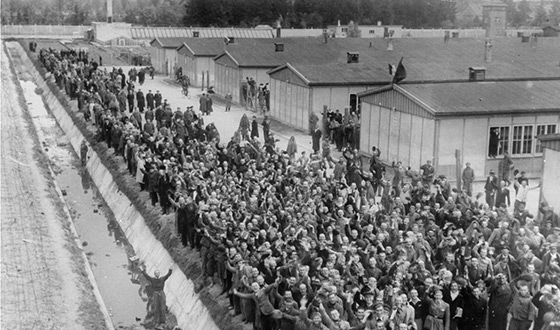
Prisoners greet their liberators, May 1945 (USHMM)

